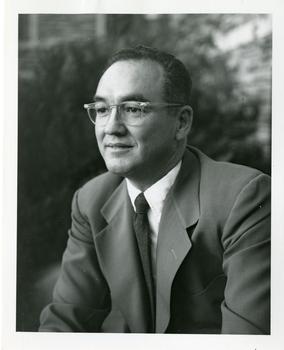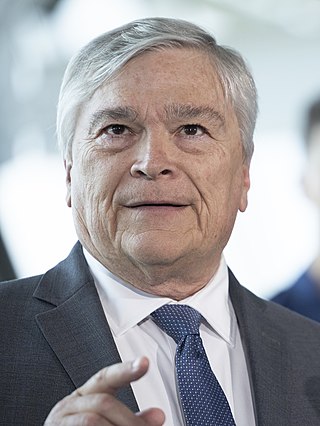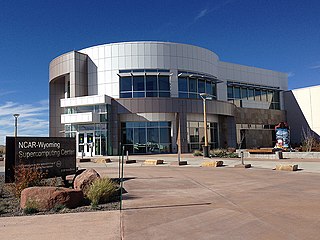The National Science Foundation Network (NSFNET) was a program of coordinated, evolving projects sponsored by the National Science Foundation (NSF) from 1985 to 1995 to promote advanced research and education networking in the United States. The program created several nationwide backbone computer networks in support of these initiatives. Initially created to link researchers to the NSF-funded supercomputing centers, through further public funding and private industry partnerships it developed into a major part of the Internet backbone.

The National Sea Grant College Program is a program of the National Oceanic and Atmospheric Administration (NOAA) within the U.S. Department of Commerce. It is a national network of 34 university-based Sea Grant programs involved in scientific research, education, training, and extension projects geared toward the conservation and practical use of the coasts, Great Lakes, and other marine areas. The program is administered by the National Oceanic and Atmospheric Administration (NOAA) with the national office located in Silver Spring, Maryland. There are Sea Grant programs located in every coastal and Great Lakes state as well as in Puerto Rico and Guam.

The Association of Universities for Research in Astronomy (AURA) is a consortium of universities and other institutions that operates astronomical observatories and telescopes.

The US National Center for Atmospheric Research is a US federally funded research and development center (FFRDC) managed by the nonprofit University Corporation for Atmospheric Research (UCAR) and funded by the National Science Foundation (NSF). NCAR has multiple facilities, including the I. M. Pei-designed Mesa Laboratory headquarters in Boulder, Colorado. Studies include meteorology, climate science, atmospheric chemistry, solar-terrestrial interactions, environmental and societal impacts.
The Presidential Early Career Award for Scientists and Engineers (PECASE) is the highest honor bestowed by the United States federal government on outstanding scientists and engineers in the early stages of their independent research careers. The White House, following recommendations from participating agencies, confers the awards annually. To be eligible for a Presidential Award, an individual must be a U.S. citizen, national, or permanent resident. Some of the winning scientists and engineers receive up to a five-year research grant.

Walter Orr Roberts was an American astronomer and atmospheric physicist, as well as an educator, philanthropist, and builder. He founded the National Center for Atmospheric Research and took a personal research interest for many years in the study of influences of the Sun on weather and climate.
The High Altitude Observatory (HAO) is a laboratory of the US National Center for Atmospheric Research (NCAR). HAO operates the Mauna Loa Solar Observatory on Hawaii and a research institute in Boulder, Colorado.
The Universities Research Association is a non-profit association of more than 90 research universities, primarily but not exclusively in the United States. It has members also in Japan, Italy, and in the United Kingdom. It was founded in 1965 at the behest of the President's Science Advisory Committee and the National Academy of Sciences to build and operate Fermilab, a National Accelerator Laboratory. Today, the mission of URA is "to establish and operate in the national interest unique laboratories and facilities for research, development, and education in the physical and biological sciences to expand the frontiers of knowledge, foster innovation, and promote the education of future generations of scientists."

The Mesa Laboratory of the National Center for Atmospheric Research is a research center located in Boulder, Colorado. The building complex was designed by modernist architect I. M. Pei in 1961 as his first project outside of city building design. It has been noted for its Anasazi-inspired architecture and use of bush-hammered concrete to blend into the surrounding area. The laboratory was named the 1967 Industrial Research Magazine's Laboratory of the Year.

Eric James Barron is an American academic administrator who was the 18th president of Pennsylvania State University from 2014 until 2022. He previously was the 14th president of Florida State University and director of the National Center for Atmospheric Research in Boulder, Colorado.

Warren Morton Washington is an American atmospheric scientist, a former chair of the National Science Board, and currently a Distinguished Scholar at the National Center for Atmospheric Research (NCAR) in Boulder, Colorado.

Roger M. Wakimoto is an atmospheric scientist specializing in research on mesoscale meteorology, particularly severe convective storms and radar meteorology. A former director of the National Center for Atmospheric Research (NCAR), Wakimoto in November 2012 was appointed as assistant director of the Directorate for Geosciences (GEO) of the National Science Foundation (NSF).

The NCAR-Wyoming Supercomputing Center (NWSC) is a high-performance computing (HPC) and data archival facility located in Cheyenne, Wyoming, that provides advanced computing services to researchers in the Earth system sciences.

Susan K. Avery is an American atmospheric physicist and President Emerita of the Woods Hole Oceanographic Institution (WHOI) in Massachusetts, where she led the marine science and engineering research organization from 2008–2015. She was the ninth president and director and the first woman to hold the leadership role at WHOI. She is Professor Emerita at the University of Colorado, Boulder (UCB), where she served on the faculty from 1982–2008. While at UCB she also served in various administrative positions, including director of the Cooperative Institute for Research in Environmental Sciences (CIRES), a 550-member collaborative institute between UCB and the National Oceanic and Atmospheric Administration (NOAA) (1994-2004); and interim positions (2004-2007) as vice chancellor for research and dean of the graduate school, and provost and executive vice chancellor for academic affairs. Currently she is a senior fellow at the Consortium for Ocean Leadership in Washington, D.C.

Timothy Laurence Killeen is a British and American geophysicist, space scientist, professor, and university administrator. Killeen took office as the president of the University of Illinois system in 2015. He has been the principal investigator on research projects for NASA and the National Science Foundation. Killeen has authored more than 150 publications in peer-reviewed journals as well as more than 300 other publications and papers. He has served on various White House committees and task forces and is a past editor-in-chief of the Journal of Atmospheric and Solar-Terrestrial Physics.
Francis Patton Bretherton was an applied mathematician and a professor emeritus of the Department of Atmospheric and Oceanic Sciences at the University of Wisconsin, Madison.
Richard A. Anthes was a long time president of the University Corporation for Atmospheric Research. The Anthes Building in Boulder, Colorado, is the first UCAR-owned building to be named for an eminent scientist – and a living one at that.” His area of study at the University of Wisconsin, Madison, focused on hurricanes and tropical cyclones. Dr. Anthes taught as a professor for ten years at Pennsylvania State University before accepting a position at the National Center for Atmospheric Research as director of the Atmospheric and Prediction Division in 1981, a position he kept until 1986 when he became director of NCAR. In 1988, he started working as president of UCAR, and retired from that position in 2012. During his presidency at UCAR, he participated or chaired over forty different national committees for agencies such as NASA, NSF, and NOAA. He also established a program aimed at increasing participation in the atmospheric sciences called SOARS .
Elisabeth Holland is an American climate scientist who focuses on how the carbon and nitrogen cycles interact with earth systems. She has become a key player in the international climate debate. She is currently a professor of climate change at the University of the South Pacific. She is also the director of the Pacific Center for Environmental and Sustainable Development.
Maura E. Hagan is a Professor of Physics and Dean of the College of Science at Utah State University. She is a Fellow of both the American Meteorological Society and the American Geophysical Union, and was elected a member of the National Academy of Sciences in 2019.

Everette Joseph is an American atmospheric scientist who serves as the director of the National Center for Atmospheric Research (NCAR) in Boulder, Colorado.










